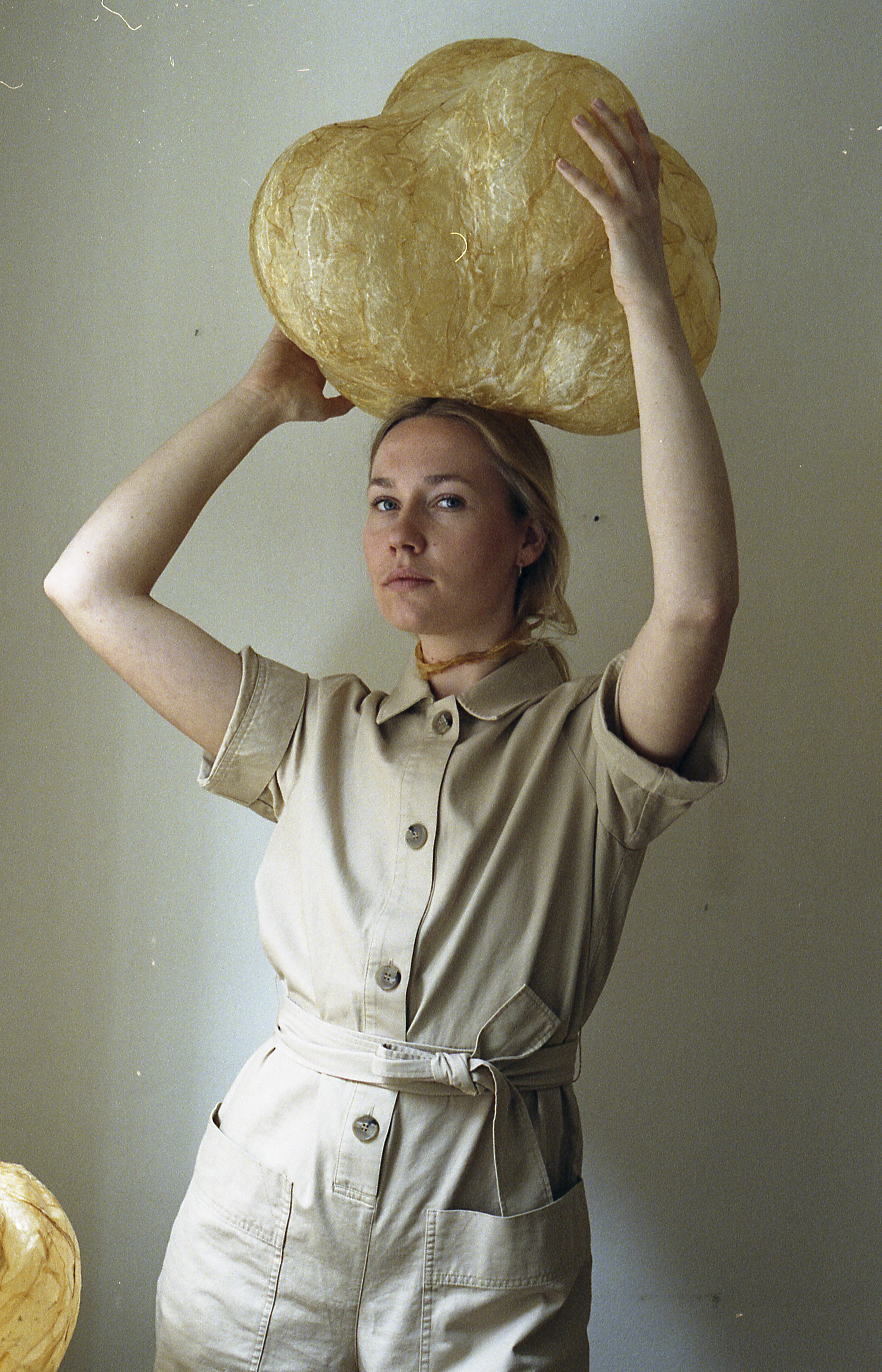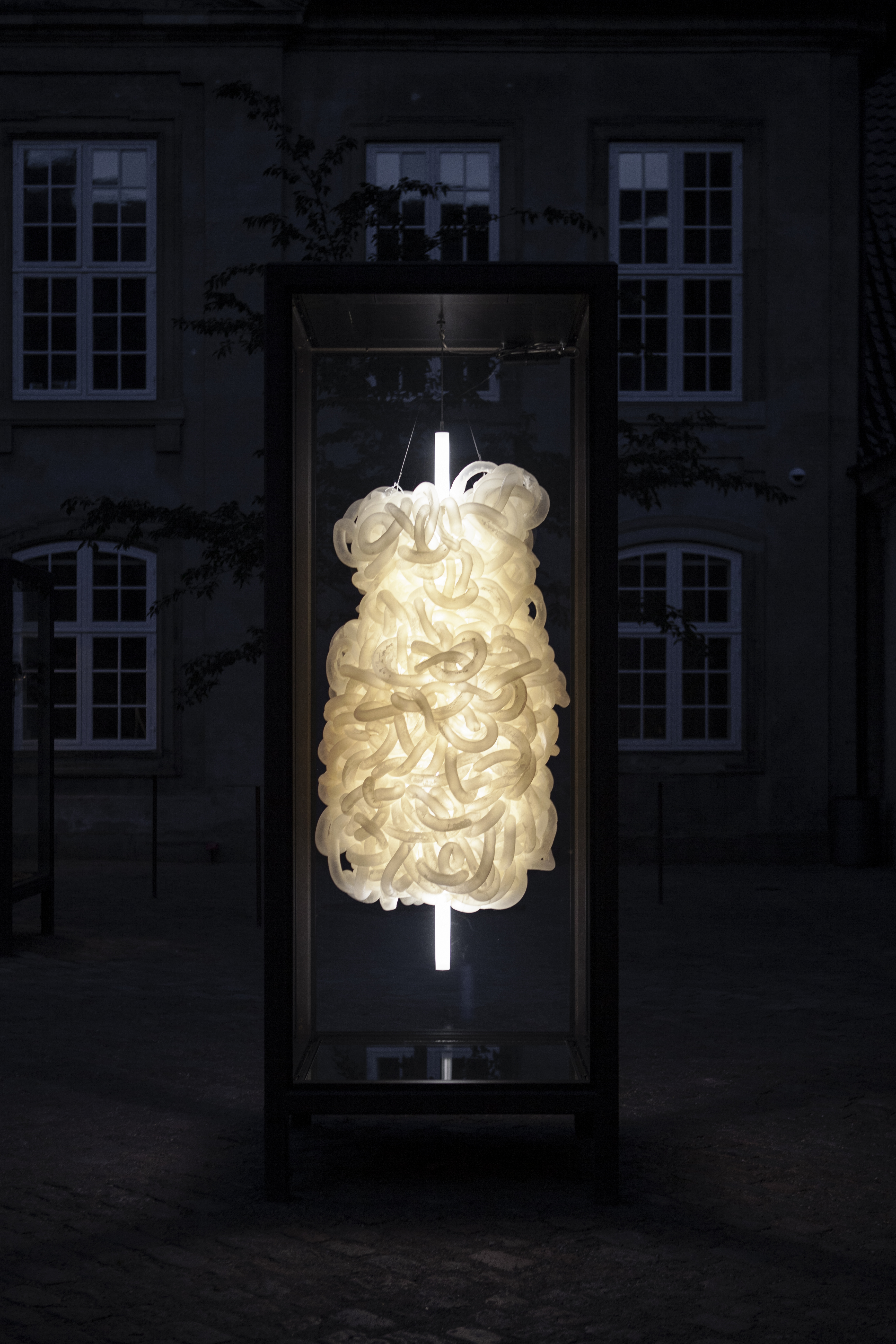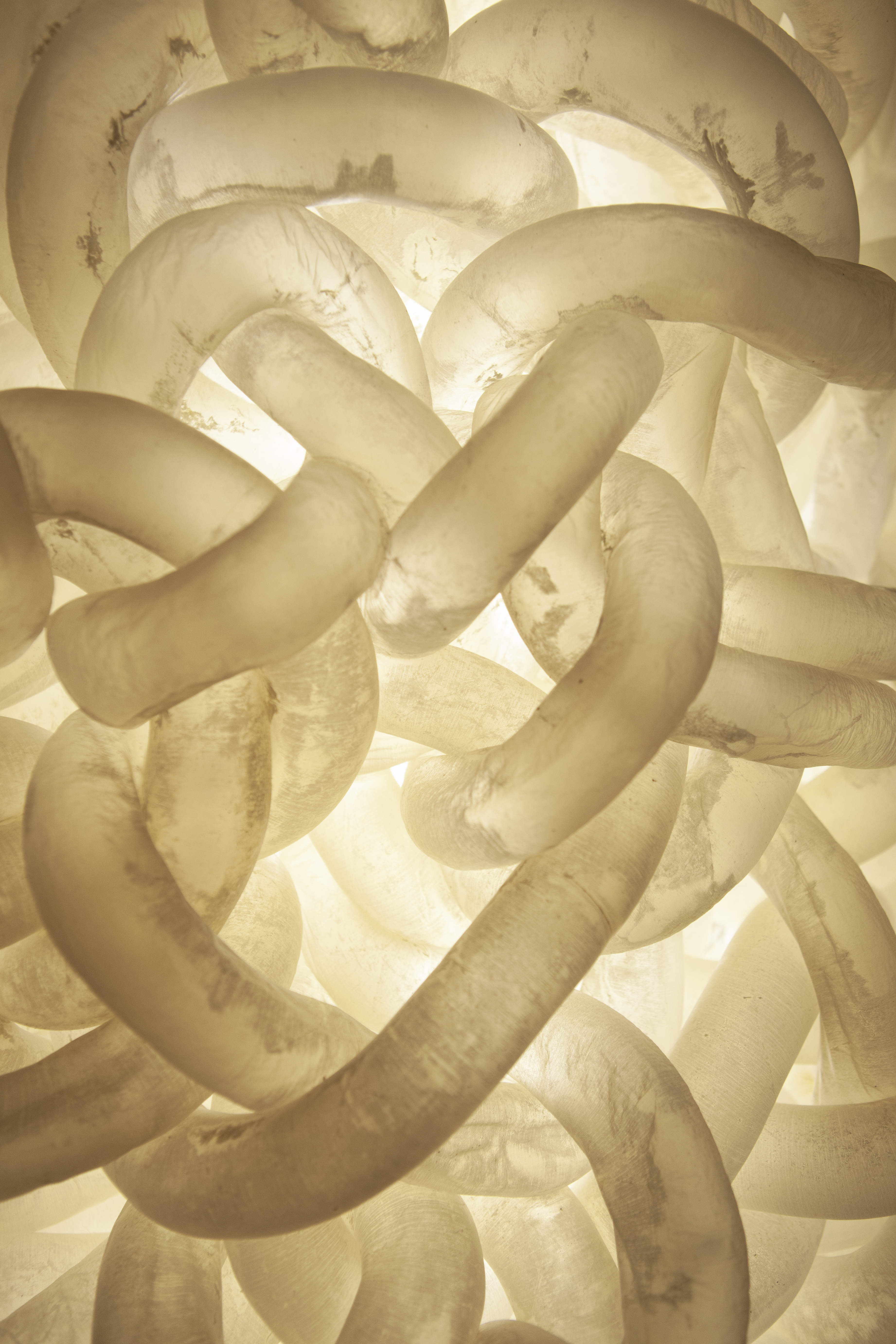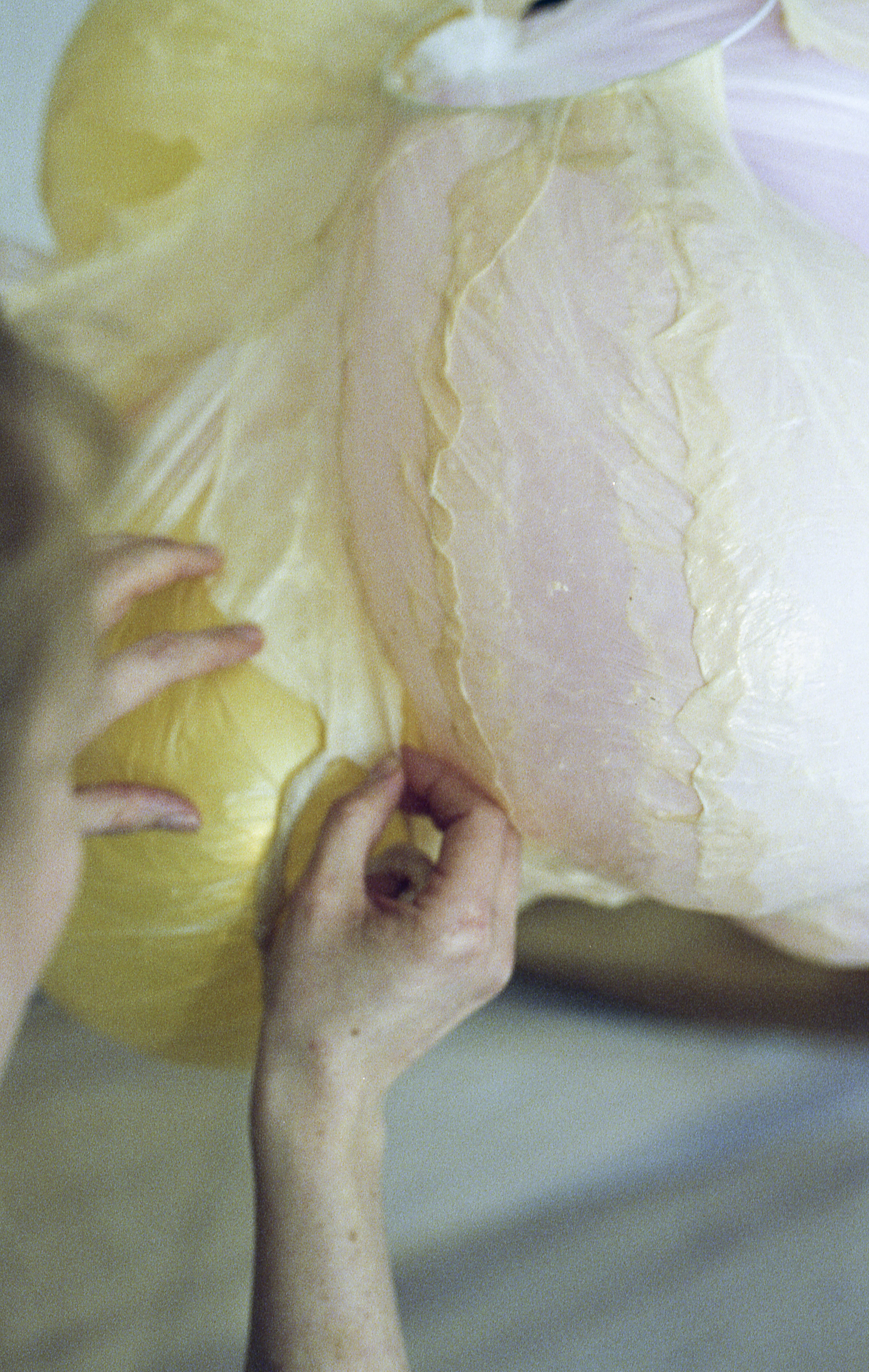“I hope that we will look back on these times and still think outside of the box, and remember what we value the most.”
Together with Qreator by IQOS, we are going to launch a new events category during this year's edition of Romanian Design Week. It is called DESIGN FLAGS, a series of seven exhibitions that document the evolution of design from international cultural perspectives, which would have been hosted by Qreator by IQOS space.
For the moment we thought of sharing with you the content of these exhibitions, online, here, and also to start a series of interviews with the teams behind them. Thus, we have the opportunity to discover together the ideas and insights that made possible each of these. You’ll be able to see the exhibition offline at Qreator by IQOS in September, during Romanian Design Week 2020.
Presented with the help of the Spanish Embassy in Bucharest, the Hungarian Institute in Bucharest, the Czech Centre, Designmuseum Danmark, CHART, Next Nature and KWY.studio, the seven exhibitions investigate new approaches and concerns in design and present innovative ideas and products that manage to redefine the sphere of which they are part.
In today's interview we talked to Danish designer Kathrine Barbro Bendixen, part of the Matters -Rethinking Materials exhibition.
 Kathrine Barbro Bendixen. Photo credits: Olivia Rohde
Kathrine Barbro Bendixen. Photo credits: Olivia Rohde
Developed by CHART in collaboration with the Designmuseum Danmark and curated by Line Ulrika Christiansen (on behalf of CHART) and Pernille Stockmarr (on behalf of Designmuseum Danmark), Matters – Rethinking Materials presents five young designers who each in their own way showcases a visionary approach to rethinking how materials, ranging from synthetic to organic, can shape new conceptual ideas for a more sustainable future of design.
- Tell us a little about your project, Inside Out, part of the Matters -Rethinking Materials exhibition.
How did it start?
The Inside Out project started as my graduation project at Design Academy Eindhoven in 2016. I wanted to work with a natural material and made a long research about the different kinds of intestines and the various proportions and possibilities.
 Inside Out. “Matters – Rethinking Materials” – the exhibition is developed by CHART and Designmuseum Danmark and curated by design curator Line Ulrika Christiansen and curator at Designmuseum Danmark, Pernille Stockmarr. Photo credits: Mathias Kruse Jørgensen
Inside Out. “Matters – Rethinking Materials” – the exhibition is developed by CHART and Designmuseum Danmark and curated by design curator Line Ulrika Christiansen and curator at Designmuseum Danmark, Pernille Stockmarr. Photo credits: Mathias Kruse Jørgensen
What was your inspiration for it and how did you start working with intestines?
My first encounter with intenstines was in my cousins kitchen around Christmas in 2016 where he had asked me to help him make a traditional Danish Christmas sausage from scratch. I was in charge of cleaning the intestines and I became so fascinated by the undefined shape the surprising white and transparent color. After that evening I decided to explore intestines further.
What did you aim by developing it?
Intestines have traditionally been used in the food industry. I was aiming to decontextualize it and find new ways of using its fascinating characteristics. After some research I discovered that cow intestines are usually not used in the food industry anymore. (It is a very niche thing to use it for sausages, usually they prefer intestines from other animals or artificial casings). Most of the cows intestines are being thrown out.) This discovery only increased my motivation to make a new use of this amazing material and to show everybody the beauty and possibilities in this very controversial spoken material.

Inside Out. “Matters – Rethinking Materials” – the exhibition is developed by CHART and Designmuseum Danmark and curated by design curator Line Ulrika Christiansen and curator at Designmuseum Danmark, Pernille Stockmarr. Photo credits: Mathias Kruse Jørgensen
What is it trying to convey or bring into discussion?
It is bringing us a bit back in time. Back to the time where everything were used and nothing was thrown out. The intestines of animals have been used for so many different products. The inuits used the seal intestines as “rain-anoraks” since it is waterproof on the outside and breathable from the inside. Gore-TEX was inspired by the functions of the intestines. It has been used for tennis rakets because of its durability and elasticity and as thread for sticking our wounds since it will dissolve over time. By rediscovering all the advantages of the material and the fact that today it is mainly a waste material, I want to raise the question of how we look at materials and inspire people to look at it in a different way. By turning intestines into interior products I wanted to show how a material we are so used to can be translated into a totally new aesthetic, function and be put into a new setting.

Photo credits: Olivia Rohde
How was it to be part of Matters - Rethinking Materials exhibition?
To be able to show my work at Design Museum Denmark has been a great experience. It has been a unique platform to show, talk and discuss materials and their new functions, settings and possibilities. To be in a group exhibition where everybody has a different approach to materials and howtoexpress a new way of thinking has been really inspiring and something I think is very important to show. I think that today, we as artists, designers, creatives, need to be aware of and react to the materials we use. We need to lead the way for the new (even if the “new” has been the new years now). We need to continueto question processes and end results, and we need to remind each other to stop and think. I think CHART, Line Ulrika Christiansen and Pernille Stockmarr have created an amazing platform for young creatives and I feel very honored to be one of the few selected!
- How are we rethinking materials nowadays? What is your perspective regarding the curiosity or ability of designers to innovate when it comes to new materials?
As designers we always want to question existing contexts. We want to explore, experiment and find answers to current environmental, technological and societal shifts. Working with materials is one of many approaches to do so.
There is definitely a big focus on rethinking the use and the products made from plastics. The curiosity of bioplastic and the reuse of plastic has been and still is a very big focus. We as designers, craftsmen and artists are in one way or another thinking about our planet and how we can rethink the materials and the ways they are being produced, used and disposed of. Some like “That curiosity and criticality / way of thinking is for me a way to emphasize the responsibility and urgency of arts and design.”
- Tell us a little about your background and other projects you developed. What is the one you are most proud of?
Since I started my own company, Studio KBB, I have been focusing on intestines as a material. I have tried so many different variations and possibilities with the material. My newest project has been a collection of stools and chairs in collaboration with my 93 year old granddad who is a former furniture maker. He is from the very classical and conventional school and have always had a big passion for the big classic chairs in Scandinavia. We designed seven seatings where the structure is made out of pinewood and then I weaved different seats and details of intestines on them. We had an exhibition in Denmark where we showed the work he had done in wood over the years together with my intestine pieces and then summed the whole exhibition up with the collaboration between the two materials and two crafts. Just being able to go in to the workshop and work with my granddad on this has been so inspiring and priceless to me and I’m so proud of the outcome!
- How is the Danish creative scene adapting or responding to the current crisis we are all facing? Do you personally believe this could turn out to be an opportunity for human kind to reassess its values, priorities and most of all its actions?
I’m sure this situation will turn into opportunities because there is no other choice. That is how humans and creatives often work. But it will also do the opposite because some people will find themselves in a situation where they have lost their financial stabilityor their mental health has suffered too much from this. I think it is important not to become credulous about the outcome.
I have personally struggled a lot during lockdown, struggled with my motivation and passion for anything work related. All my “Material research” workshops at the Danish Design Museum got cancelled and all my spring exhibitions got postponed. The daily routines changed and the focus on the intestines and anything work related was not existing anymore. I had the need to focus on my family, friends and my own wellbeing. I have felt ashamed that I have not had the motivation for anything creative because somehow there is a pressure on all of us to create, rethink or remake our whole practice. It took me a long time to accept that I didn’t have to reinvent the wheel just because I’m behind locked doors and that it is okay to not be inspired at the moment. I’ve known that I would get restless at one point, and that things would happen, new projects and new passions would come back to me and of course they did.
- And if so, what do you expect to happen in the design world, as an adaptation or reaction or (maybe) answer to the current situation? What would you hope to happen?
I think we will see a lot of passion and heart in the next coming years. The projects that will be done will exist because of an instant drive to make something. I hope thatwe will look back onthese times and still think outside of the box,and remember whatwe value the most.
- What would you recommend to a creative person as a resource for this period of social distancing and isolation (in terms of activities, books, online courses or other resources).
During the lockdown in Copenhagen I have had the urge to do something good for my body and soul. I have felt strangled, out of breath and energy, so I started to go forwalks and run everyday. My body was screaming for attention and I really prioritized and gave myself the time to breath in fresh air.
I have also really enjoyed the podcast and online magazine “Emergence Magazine” that challenges the connection between ecology, spirituality and culture.
- Do you believe that constraints are a drive or necessity for the creative act to happen? And if so, why or how come?
For me constraints are usually a drive. I try to look at restrictions as a positive thing instead of a negative thing. They challenge me to adapt and work in a different way than I worked before. I can reinvent my process and create new outcomes. Having no restrictions - which means having every opportunity in the world - can be very overwhelming. That’s why every project I start I always make rules for myself and try to define the framework I’m working in.
- What do you expect Rethinking or Change to actually mean in the future?
These are words that are being thrown around a lot these days. In design and art but also everywhere else. Politics, technology, science and alternatives to science, etc. That is obviously a good thing but it also comes with a risk of diluting the actual meaning of the words. The content of the words must always come first and I think it is our responsibility - as designers and as citizens of the world - to be critical towards what we as well as others put into the world.
Where you can find her:
https://www.instagram.com/studiokbb/?hl=en
Design Flags is supported by Qreator by IQOS.
Qreator by IQOS - Home of Creativity is one of the most active promoters and facilitators of creativity in the cultural area of Bucharest. Through the events it organizes or hosts, Qreator by IQOS connects the creative communities of Bucharest with all those passionate about creativity, in all its forms. Qreator by IQOS provides a space where they can express themselves and collaborate, but also the technological resources needed to put their ideas and projects into practice. More information on http://www.qreator.ro and http://www.facebook.com/qreator.
___
Find out more about the Matters – Rethinking Materials exhibition here.
